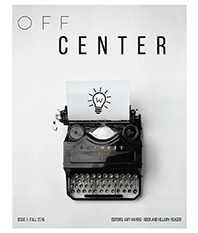SWC 10: Writing a Literature Review
Dynamic PDF: Writing a Literature Review
A literature review is a synthesis of your research. It demonstrates your understanding
of the existing scholarship relevant to your own inquiry, why your research is necessary,
and how your sources are in conversation with each other.
Goals for a Literature Review:
- Describe the nature of the field or fields relevant to the inquiry
- Identify major debates
- Define contentious terms
- Locate gaps in the field and identify the contribution your study will make
Steps to Create a Literature Review
- Consider the purpose of your literature review.
- Telling a story about relevant previous work
- Showing how your own work builds upon or departs from earlier work
- Demonstrating how you are avoiding replicating existing research
- Discussing problems and/or controversies in your field
- Revealing gaps in existing literature
- Critically evaluating existing literature
- Discovering conceptual frameworks or traditions used to examine problems in your field
- Showing how your work might contribute to a scholarly conversation
- Showing the relationship between your field and another field
- Highlighting relevant methodologies in your field
- Choose which sources to include and discuss. Once you have a clear sense of purpose, you will need to choose your sources. Some
will be essential to your review. Consider:
- Why did I select these sources?
- What contribution do they make to my topic or the field?
- How might these sources fulfill the purpose of my review as I have defined it?
- Which ones should I leave out, and why?
- Choose the organization of your literature review. Consider how putting sources together in a particular way will affect your reader’s
perception of the conversation at hand.
- Chronological (trace how the scholarly conversation has changed over time)
- Thematic
- Perspective
- Provenance (country or origin)
- Genre (type of publication: government reports, scholarly studies, review articles, etc.)
- Theoretical approach (cluster sources based on theoretical framework)
- Practical applications
- Consider your stance (Intervention and/or Contribution).
- Intervention: designed to critically challenge an established idea or something you think is problematic within the existing literature; defends the importance of something previously overlooked
- Contribution: adds to the ongoing conversation, fills a conceptual or methodological gap, creates or operationalizes an intersection between fields, or extends an existing idea into a new area of study
- Then, in preparing to draft your own stance, consider the following questions:
- Which ideas from the literature are most important or ground-breaking?
- Which ideas (or methodologies) permeate but are flawed in some way?
- Are there inconsistences in the field concerning certain topics?
- Is there consensus?
- What do scholars ignore?
- Begin Writing! Consider the following strategies:
- Start with a general description of your topic such as accepted knowledge or a premise in the field
- Highlight the topic’s importance
- Suggest how a review of the literature is valuable to understanding important aspects of your research
- Clarify the scope and overall organization of the literature review
- Throughout the review, use sign posts (phrases indicating purpose) such as:
- “In this section, I will discuss the past and current applications of the theory.”
- “At this point, the reader will recognize that…”
- “The study excludes the literature prior to 1990 because of a fundamental shift in theoretical thinking at that moment.”
- “The main purpose of this review has been to examine to what extent….”
Need some examples?
Many journal articles will have a literature review section at the beginning of the
article providing historical background of the topic, outlining its development in
the research, and highlighting the main scholars and voices in the field of study
relevant to the topic. Find some articles in your field and read them to help you
understand the purpose and structure of a literature review.
Office Phone
(615) 904-8237
Location
Walker Library, Room 362
Address:
The Writing Center
Box 70
Middle Tennessee State University
Murfreesboro, TN 37132
Read about our 45th Anniversary event and take a look at our growing digital archive!



